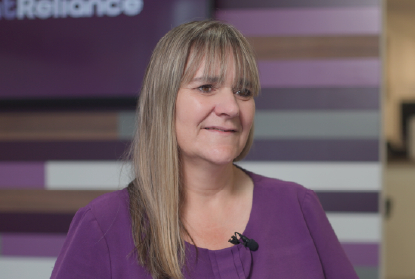Featured article

Savings
17 Dec 2025
Smart saving: how to enjoy Christmas without overspending
As the festive season approaches, many feel pressure to create the “perfect” Christmas.

Louise Halliwell
Filter

Savings
17 Dec 2025
Smart saving: how to enjoy Christmas without overspending

17 Dec 2025
Smart saving: how to enjoy Christmas without overspending

As the festive season approaches, many feel pressure to create the “perfect” Christmas.
Read more
Savings
09 Dec 2025
Cash ISA news

09 Dec 2025
Cash ISA news

After the Autumn budget announcement by the Chancellor, Rachel Reeves, we explore the key changes to the ISA allowance and how it will affect you and your savings.
Read more
Savings
04 Dec 2025
Could you maximise your savings allowance before ISA tax year end?

04 Dec 2025
Could you maximise your savings allowance before ISA tax year end?

The ISA tax year is coming to an end, but could you still stretch your savings success?
Read more
Fraud
17 Nov 2025
Three scams to watch out for – and how to beat them

17 Nov 2025
Three scams to watch out for – and how to beat them

Ensuring your savings are safe is at the heart of everything we do. Unfortunately, fraudsters are becoming more sophisticated - using convincing messages, phone calls, and even fake investment opportunities to trick people into handing over their hard-earned money.
Read more
Savings
24 Sep 2025
Behind the counter: saving stories from our branch team

24 Sep 2025
Behind the counter: saving stories from our branch team

We all save for different reasons, whether it’s a dream holiday, a first home or simply peace of mind. We caught up with our branch team to hear about their personal goals, the unusual things customers have saved for and the best saving tips they’ve picked up along the way.
Read more
Community
13 Aug 2025
Step Into the Story This Summer with Demelza’s “Trail with a Tale” Proudly Sponsored by Kent Reliance

13 Aug 2025
Step Into the Story This Summer with Demelza’s “Trail with a Tale” Proudly Sponsored by Kent Reliance

Looking for a fun, free, and meaningful activity to enjoy with the family this summer? Discover Demelza’s Trail with a Tale, a magical sculpture trail running in Tunbridge Wells from 29 July to 1 September, proudly sponsored by Kent Reliance in support of one of our long-standing charity partners, Demelza.
Read more
Community
29 Jul 2025
How our donations are making a difference

29 Jul 2025
How our donations are making a difference

We’re proud to have been sponsoring our charity partner Demelza since 2018, supporting the vital work they do to help children facing serious or life-limiting conditions, and their families.
Read more
Savings
28 Jul 2025
Are you ready for a summer of saving?

28 Jul 2025
Are you ready for a summer of saving?

33% of Brits have been putting their money away for a holiday or travel, according to our “Sunny Day Savings” survey.
Read more
Lifestyle
30 May 2025
Ready for retirement? It’s never too early to plan

30 May 2025
Ready for retirement? It’s never too early to plan

The sooner you start planning for your retirement, the better. If you’re not quite financially ready for your golden years, let’s see how we could help you to set up your savings.
Read more
Savings
13 May 2025
Busting UK Savings Myths: From Teaser Rates to Savings Strategy and the Personal Savings Allowance

13 May 2025
Busting UK Savings Myths: From Teaser Rates to Savings Strategy and the Personal Savings Allowance

In today's complex financial landscape, UK savers face a barrage of information that can be difficult to navigate.
Read more
Lifestyle
07 Apr 2025
Improve your relationship with money

07 Apr 2025
Improve your relationship with money

Some of you will already have a great relationship with your money but could it be even better?
Read more
Savings
18 Feb 2025
Are your savings working for you?

18 Feb 2025
Are your savings working for you?

Are your savings on track for 2025? When starting a new year, many of us update our calendars, join a gym or start planning our holidays, but how many of us make sure our savings are in tip-top condition?
Read more
Savings
14 Feb 2025
ISA just called to say ‘I love you’ – but is it worth your affection?

14 Feb 2025
ISA just called to say ‘I love you’ – but is it worth your affection?

Individual Savings Accounts (ISAs) have been around for over 25 years and provide a way for savers to earn interest on their money tax-free.
Read more
Savings
24 Jan 2025
Understanding the Basics: Key Definitions in Savings and Personal Finance

24 Jan 2025
Understanding the Basics: Key Definitions in Savings and Personal Finance

Managing your money can feel like a big task, especially with all the different terms relating to savings.
Read more
Fraud
18 Nov 2024
Fighting fraud face-to-face

18 Nov 2024
Fighting fraud face-to-face

At Kent Reliance, we do everything we can to ensure your accounts remain secure. But we also recommend staying up to date with the latest scams so that together, we can stay one step ahead of fraudsters.
Read more
Lifestyle
19 Sep 2024
Multigenerational holidays: Saving up and splitting the bill

19 Sep 2024
Multigenerational holidays: Saving up and splitting the bill

When it comes to saving up for a week in the sun with your nearest and dearest, what (or who) exactly do you intend on paying for?
Read more
Lifestyle
19 Aug 2024
A holiday to remember for generations

19 Aug 2024
A holiday to remember for generations

In truth, it’s no surprise; especially given that in our recent survey of over 4,000 Brits1, 60% of those that go on multigenerational holidays said they’re the trips they look forward to the most.
Read more
Savings
14 Aug 2024
Regular Savings accounts and interest explained

14 Aug 2024
Regular Savings accounts and interest explained

A Regular Savings account could be a great choice if you want to earn interest on your savings without locking them away.
Read more
Lifestyle
13 Aug 2024
A Demelza children’s saving account could help invest in a child’s future

13 Aug 2024
A Demelza children’s saving account could help invest in a child’s future

A Demelza children’s savings account can help to build a nest egg for children and at the same time teach them important life lessons on managing money wisely.
Read more
Lifestyle
12 Aug 2024
Nine tips to help you save for your child’s future

12 Aug 2024
Nine tips to help you save for your child’s future

Helping your child save won’t only give some financial security but is an excellent way of teaching them to be financially aware and give a sense of responsibility. A recent poll* by Kent Reliance has revealed that 45% of parents don’t have a children’s savings account.
Read more
Community
07 Aug 2024
Kent Reliance brings football home with sponsorship of newly formed SEFA Women

07 Aug 2024
Kent Reliance brings football home with sponsorship of newly formed SEFA Women

Like much of the country, we’ve been gripped by football fever for the past three months. And while our summer of sport may not have resulted in any silverware, we’re certain next year could bring success with England’s Lionesses qualifying for the Euro 2025 Championship.
Read more
Lifestyle
18 Jul 2024
Why Brits are never too old to go on holiday with their parents (and parents are never too old to foot the bill…)

18 Jul 2024
Why Brits are never too old to go on holiday with their parents (and parents are never too old to foot the bill…)

We’re a nation of avid holiday-goers, whether opting for a sun-soaked getaway or a simple sojourn somewhere closer to home.
Read more
Lifestyle
08 Jul 2024
15 million brits flock to multigenerational family holidays

08 Jul 2024
15 million brits flock to multigenerational family holidays

Multigenerational holidays are a mainstay of British downtime, with nearly one in three Brits (29%) saying they’ve been on a holiday with adult family members from multiple generations in the last three years, according to new research from Kent Reliance.
Read more
Branch news
29 Jun 2024
Our new and improved Gravesend branch is now open!

29 Jun 2024
Our new and improved Gravesend branch is now open!

Our Gravesend branch has taken a step in a new direction. We’ve changed its location and made an investment to support our network and community.
Read more
Community
29 Jun 2024
Kent Reliance joins the Heart of Kent trail

29 Jun 2024
Kent Reliance joins the Heart of Kent trail

Heart of Kent Hospice provides free, specialist care and support for adults living with a terminal illness and their loved ones.
Read more
Community
28 Jun 2024
Kent Reliance joins Shaun the Sheep Trail for Heart of Kent Hospice

28 Jun 2024
Kent Reliance joins Shaun the Sheep Trail for Heart of Kent Hospice

Local savings bank, Kent Reliance, has joined the flock to become one of the sponsors for ‘Shaun the Sheep in the Heart of Kent’ art trail with its ‘Hope in the darkness’ Shaun design.
Read more
Lifestyle
20 Jun 2024
Never ending family holiday bill revealed as parents pay for adult children

20 Jun 2024
Never ending family holiday bill revealed as parents pay for adult children

Two in five (42%) of parents are paying for their adult children to join their multigenerational holidays, with three in ten (29%) planning to always do so, according to new research released today from Kent Reliance.
Read more
Savings
22 Mar 2024
ISA vs Savings accounts

22 Mar 2024
ISA vs Savings accounts

It feels like only yesterday we were wishing each other Happy New Year, but it’s not long now until we wish you Happy New Tax Year instead! The UK tax year runs from the 6th April each year, so it’s fast approaching.
Read more
Lifestyle
25 Jan 2024
5 top tips to making the most of your savings in 2024

25 Jan 2024
5 top tips to making the most of your savings in 2024

For many people, a new year means fresh starts, new goals, and a chance to grow. So, why not inject this into your savings habits for 2024?
Read more
Community
19 Dec 2023
Kent Reliance partners up with Kent FA to shoot for new heights in grassroots football

19 Dec 2023
Kent Reliance partners up with Kent FA to shoot for new heights in grassroots football

At Kent Reliance, we’re always striving to support and promote community spirit, so we’re incredibly excited to team up with Kent Football Association (FA) to promote its online Kent Football Show.
Read more
Community
18 Dec 2023
Celebrating 25 years of Demelza

18 Dec 2023
Celebrating 25 years of Demelza

As the end of 2023 draws nearer, we wanted to join in with the birthday celebrations as our charity partner Demelza marks its 25th anniversary.
Read more
Fraud
13 Nov 2023
How can I avoid scams?

13 Nov 2023
How can I avoid scams?

Nowadays, it‘s pretty much impossible to find anyone who’s not connected to the internet in some way. Maybe you’re signed up to social media to keep in touch with friends, use online shopping to avoid busy town centres or simply have an account for a subscription service, like Netflix.
Read more
Lifestyle
29 Sep 2023
What kind of saver are you?

29 Sep 2023
What kind of saver are you?

Well, if you’d like to find out, look no further! Our nifty saver quiz may help you figure out how you like to save as well as looking at some savings options for you.
Read more
Community
25 Aug 2023
Kent’s all female football team score space in FA Cup

25 Aug 2023
Kent’s all female football team score space in FA Cup

Following the Lionesses amazing journey which saw them make the final of the Women’s World Cup, XL@Football, Kent’s all female football club are heading towards their first game in the women’s FA Cup on 10th September when they face Herne Bay.
Read more
Savings
03 Aug 2023
Are you taking advantage of your full ISA allowance?

03 Aug 2023
Are you taking advantage of your full ISA allowance?

If someone offered you a delicious cupcake, would you take a bite and throw the rest in the bin? If you can’t resist a sweet treat the thought of throwing away a delicious cupcake probably fills you full of horror, but that’s essentially what millions of savers could be doing by not making the most of the full annual Individual Savings Account (ISA) allowance.
Read more
Lifestyle
21 Jun 2023
How encouraging children to save can help them succeed both personally and financially

21 Jun 2023
How encouraging children to save can help them succeed both personally and financially

It’s said that it’s never too early to teach children about money, and encouraging them to save from a young age is one of the best ways to develop their financial responsibility.
Read more
Savings
27 Mar 2023
Personal Savings Allowance – what’s it all about?

27 Mar 2023
Personal Savings Allowance – what’s it all about?

You might have heard the term Personal Savings Allowance but may not be quite sure what it means.
Read more
Savings
15 Mar 2023
Cash ISA transfers – what you need to know

15 Mar 2023
Cash ISA transfers – what you need to know

The thought of transferring your cash ISA can be quite daunting and might seem complicated. But with the current economic climate, it’s more important than ever to make sure you’re making the most out of your savings, and you should shop around to find the best ISA for you.
Read more
Community
03 Feb 2023
Our community partnerships – a year in review

03 Feb 2023
Our community partnerships – a year in review

Last year we celebrated four years of our partnership with Demelza Children’s Hospice – a Kent-based charity that provides care and treasured memories for terminally ill children, and their families.
Read more
Community
30 Jan 2023
Best Children’s Savings Provider at Moneynet Awards 2023

30 Jan 2023
Best Children’s Savings Provider at Moneynet Awards 2023

We’re thrilled to announce that we’ve been named as the Best Children’s Savings Provider and the Best Fixed Rate Savings Provider at the Moneynet Awards 2023.
Read more
Community
15 Nov 2022
Kent Reliance football scholarship sees players through tough times

15 Nov 2022
Kent Reliance football scholarship sees players through tough times

Kent Reliance sponsors the senior, youth and coaching teams at XL@Football, a Kent-based women’s football academy, and this year we launched the Kent Reliance Scholarship.
Read more
Savings
19 Oct 2022
To fix or not to fix, that is the question

19 Oct 2022
To fix or not to fix, that is the question

With the Bank of England rate being at a 14-year high, you could say that things are finally looking up for savers.
Read more
Community
20 Jul 2022
Raising funds in the summer sun with Demelza

20 Jul 2022
Raising funds in the summer sun with Demelza

We’re proud to have been supporting Demelza Children’s Hospice for many years since it was founded in 1998, through various fundraising initiatives and donations. These funds are vital to the hospices and help to pay for trained, specialist nurses.
Read more
Community
05 Jul 2022
In conversation with Freya McKenzie, XL@Football player and referee

05 Jul 2022
In conversation with Freya McKenzie, XL@Football player and referee

Freya McKenzie is just 16 years old but she’s already a qualified referee and a player for XL@Football women’s club.
Read more
Community
13 Jun 2022
Jubilee celebrations – reflecting on our own history, heritage and service to our communities

13 Jun 2022
Jubilee celebrations – reflecting on our own history, heritage and service to our communities

We conclude our two-part series celebrating the Queen’s Jubilee by looking at what Kent Reliance and another great institution, the Royal Family, have in common.
Read more
Community
31 May 2022
Jubilee celebrations – reflecting on our own history, heritage and service to our communities

31 May 2022
Jubilee celebrations – reflecting on our own history, heritage and service to our communities

This year, Her Majesty the Queen will become the first British Monarch to celebrate a Platinum Jubilee after an incredible 70 years of service to her country.
Read more
Savings
31 May 2022
What you need to know when choosing a savings account

31 May 2022
What you need to know when choosing a savings account

Whether you’re just starting to think about where to put your savings, or have been saving for a while, it’s important to make sure you have the account that would work hardest to meet your savings goals.
Read more
Community
17 Jan 2022
Our community matters – past, present and future

17 Jan 2022
Our community matters – past, present and future

We’re humbled to be celebrating 4 years of our incredible partnership with Demelza Hospice Care for Children, a charity that provides care and treasured memories for children with severe and terminal health conditions and support for their families.
Read more
Savings
09 Dec 2021
Making the most out of ISAs

09 Dec 2021
Making the most out of ISAs

Have you wondered about opening an ISA but want to find out more about them, and if they’re the best option for your savings? Or, if you have an ISA already, do you want to refresh your knowledge to make sure you’re getting the most out of it?
Read more
Lifestyle
06 Dec 2021
How lockdown taught us to save more money

06 Dec 2021
How lockdown taught us to save more money

For some of us, lockdown provided an opportunity to save more money through reviewing our lifestyle as well as our spending and savings habits. And whilst lockdown was undoubtedly a difficult period for many of us, it was a time for realisation and taking stock for others.
Read more
Lifestyle
17 Dec 2020
7 simple lifestyle changes to help you save money

17 Dec 2020
7 simple lifestyle changes to help you save money

Knowing how to save money isn’t something that you typically learn at school, and it’s not something that comes naturally to everybody.
Read more
Lifestyle
04 Dec 2020
How to save money | techniques you may not know about

04 Dec 2020
How to save money | techniques you may not know about

Deciding how to save money is usually the first task on most people’s savings plan. If you’re more of a conventional saver, exploring a few of the more ‘out there’ techniques in this list may take you out of your comfort zone, however you may find a perfect fit for your plan, and settle on a savings habit that works for you, whether for the long or the short-term.
Read more